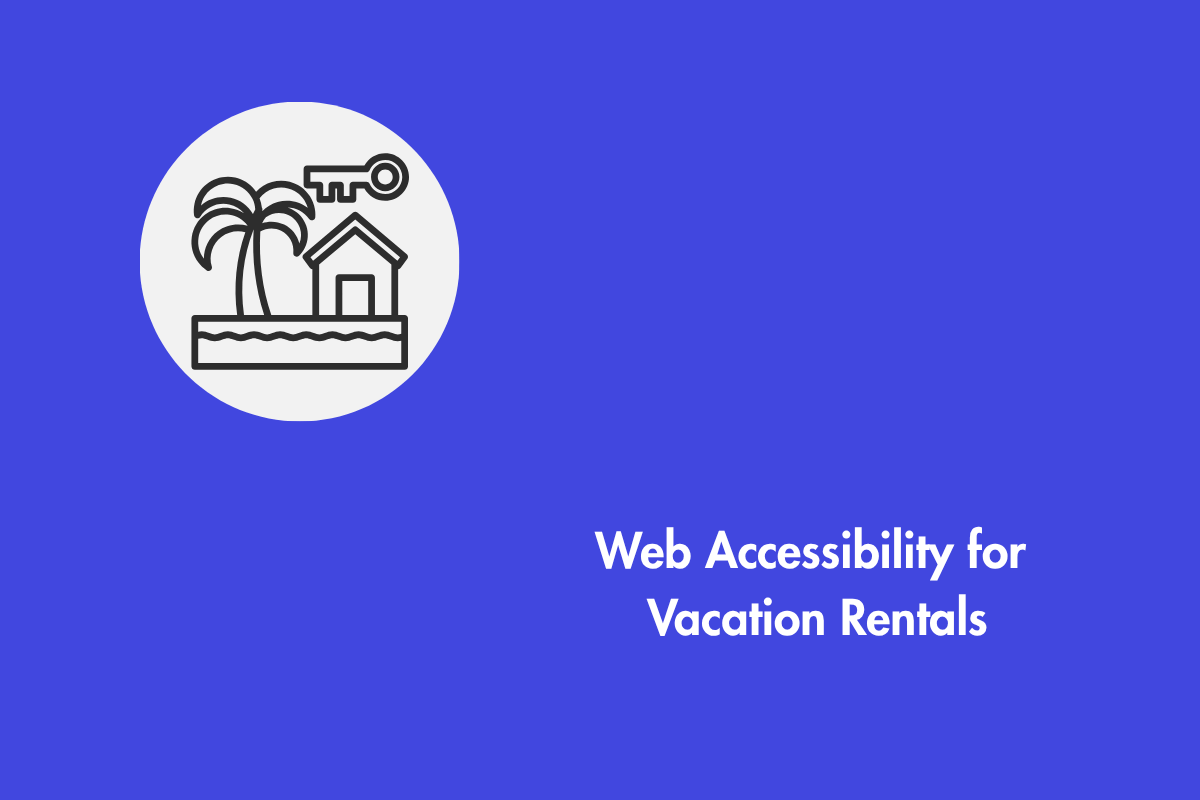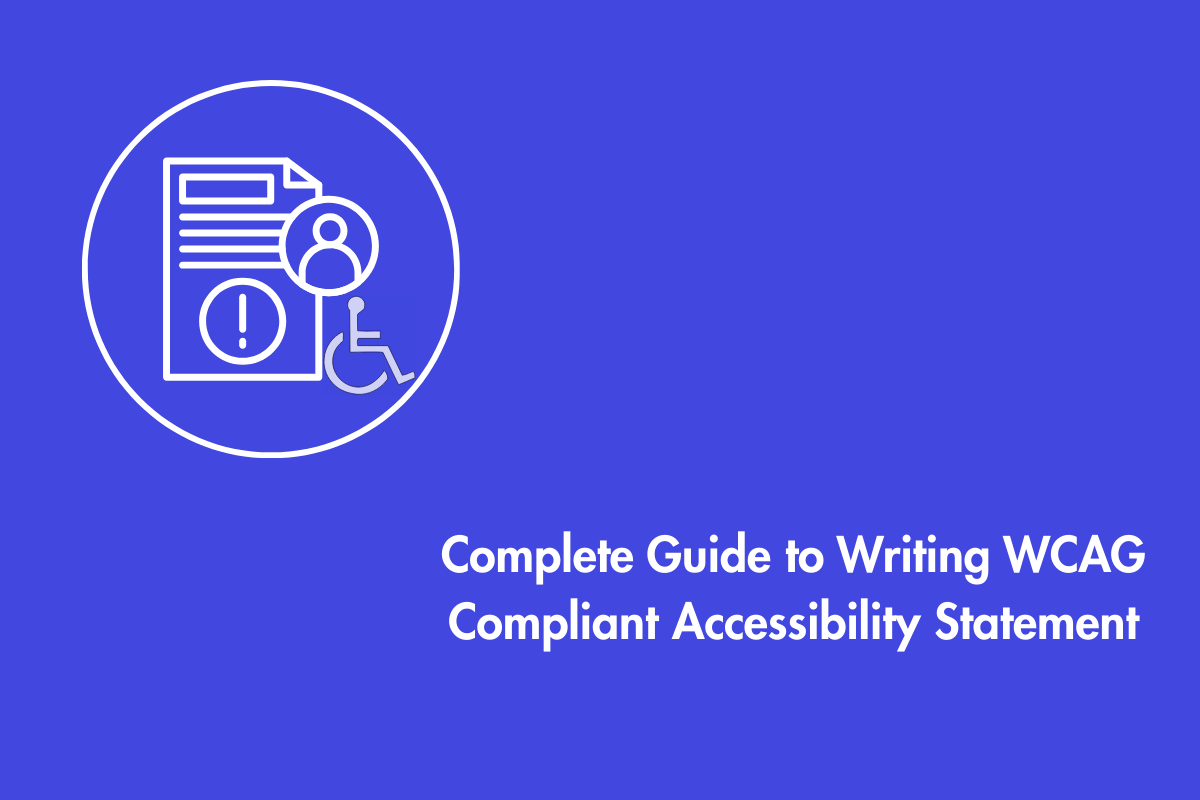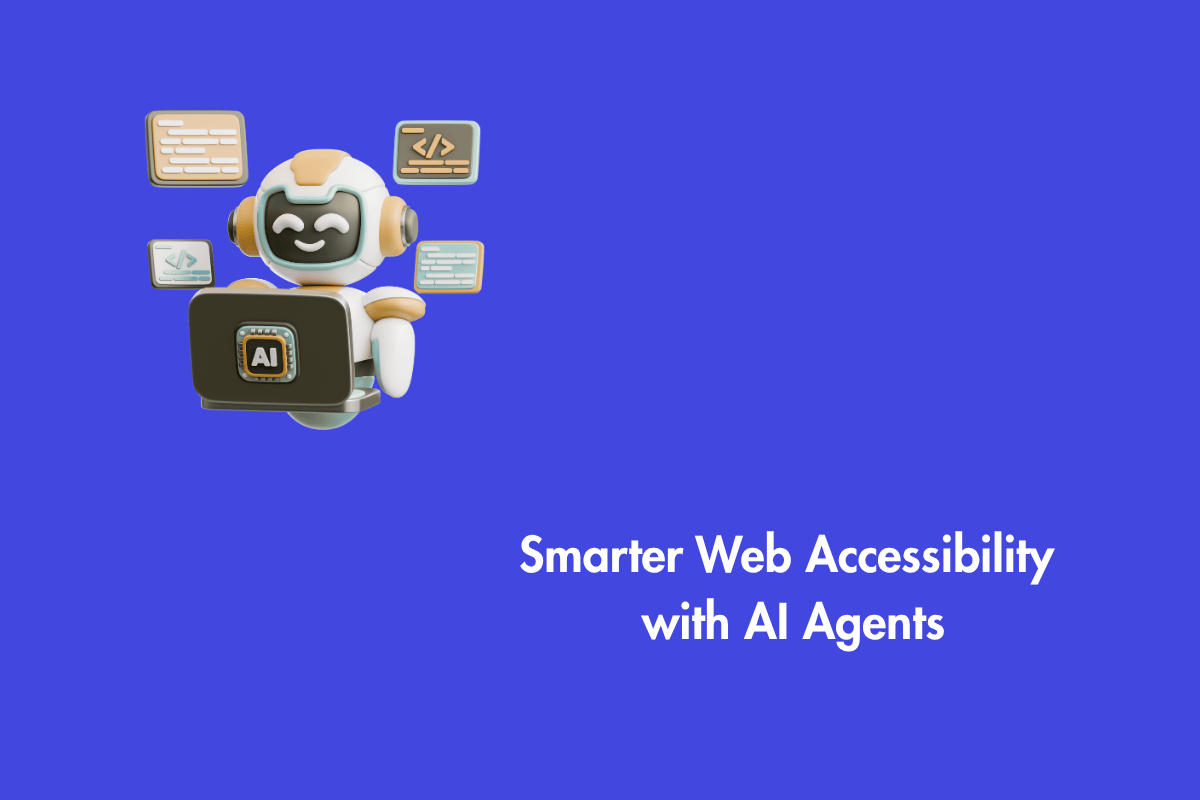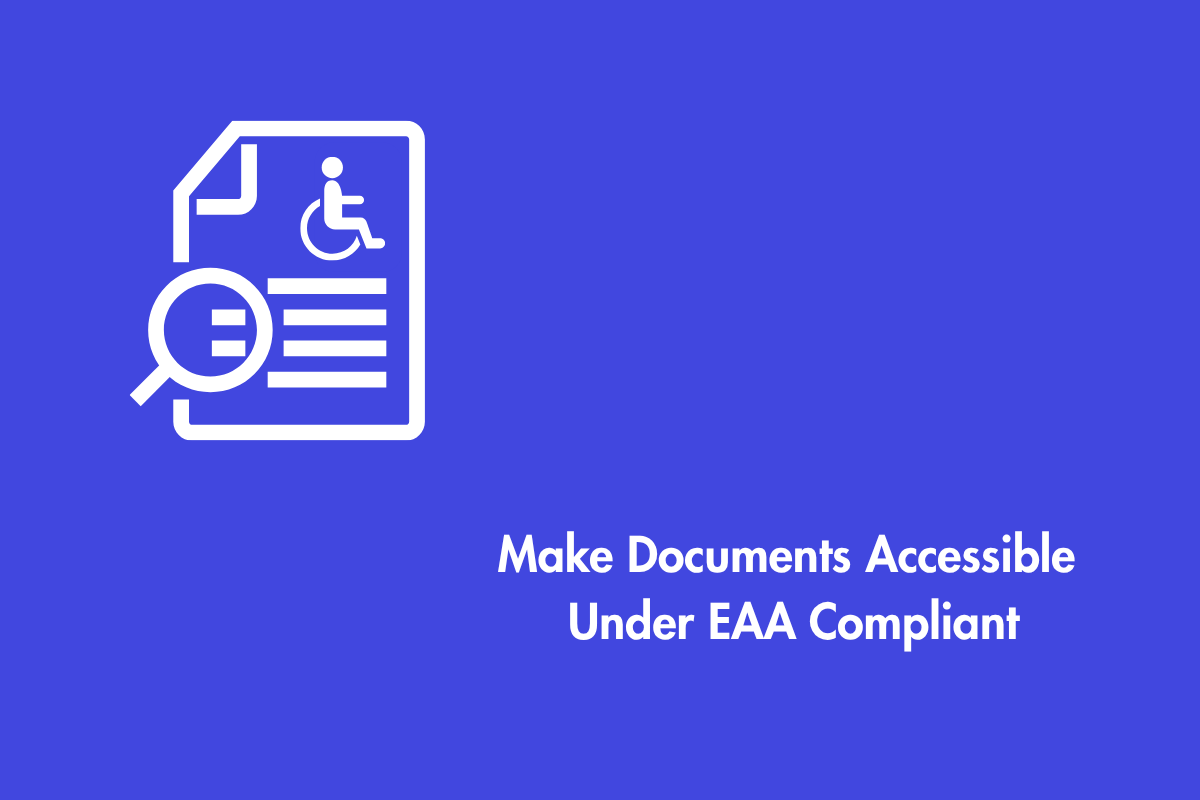You pour your heart into your vacation rental. You choose the perfect linens, stock the kitchen with local coffee, and craft a guidebook full of hidden gems. Every detail is designed to create an unforgettable experience. But ask yourself this: can everyone who reads your listing actually enjoy the stay you work so hard to create? If your property isn’t accessible, the honest answer is ‘NO’. And that’s a significant missed opportunity.
For a long time, many vacation rental owners have viewed accessibility as a complex, expensive legal requirement, a box to check for a small minority. We need to shift that perspective. Making your site accessible is one of the most effective, smart, and considerate things you can do for your business today.
This isn’t all just ‘ramps and grab bars’. It is about opening your doors wider, being smarter about your business, and really living the spirit of hospitality for everyone. Let us look at why accessibility is a must-have for every modern vacation rental that wants to be successful.
Table of Contents
Understanding the “WHY” – It’s More Crucial Than You Think
Let’s start by busting the biggest myth: accessible travel is not a niche market.
The Market is Massive and Ready to Spend
Consider these numbers. The World Health Organization tells us that over 1.6 billion people in the world live with a disability. That’s 1 in 6 of us. Now, factor in their families, friends, and travel companions. This can be called the “Accessibility Economy,” and it represents a market with a staggering $8 trillion in annual disposable income.
This isn’t a small group. This is a vast, global community that actively seeks out businesses that welcome them. They are loyal customers who will return year after year and passionately recommend your property to their entire network if you get it right. By not being accessible, you are consciously turning away this enormous economic force.
It’s the Law, But Think of It as a Foundation
Public spaces must be accessible under the Americans with Disabilities Act (ADA), a requirement not only in the U.S. but in many other countries as well. Vacation rentals can fall into a gray area, but the principle is clear: everyone should be able to book and enjoy a stay.
Rather than viewing accessibility as a regulatory burden, see it as a commitment to basic human dignity. The law sets the minimum—your hospitality can exceed it. Compliance reduces risk; true accessibility builds trust, loyalty, and a lasting reputation.
Most countries prohibit discrimination against people with disabilities in “places of public accommodation” and that includes websites and apps. If your brand operates internationally, you’re expected to comply with all relevant digital accessibility laws.
It’s Simply Good Business
Wider appeal means more bookings. It’s that simple. An accessible property opens the door to a broader range of guests, including:
- People with disabilities related to mobility, vision, hearing, or cognition
- Older adults who value safety, comfort, and ease of use, a rapidly growing market
- Families with young children who benefit from step-free access and wider doorways
- Injured travelers, like someone with a broken leg, who still want to enjoy a getaway
Accessibility makes your property more versatile, resilient to market shifts, and attractive to a wider audience. In short, you’re future-proofing your investment while creating a more inclusive and welcoming space for everyone.
Beyond the Ramp – What True Accessibility Really Looks Like!
Accessibility isn’t a simple Yes or No. It’s a spectrum. Every step you take makes a difference, even if you can’t do everything at once. True mobility considers all aspects: Physical, Sensory, Cognitive, and Digital accessibility.
1. Physical & Mobility Accessibility: The Most Visible Step
When people think about accessibility, physical mobility is often what comes to mind. It’s a critical starting point but it involves more than just adding a ramp.
Arrival & Entry:
Ensure at least one step-free entry path from the parking area to the front door. A wide, level pathway, at least 36 inches wide, makes all the difference. Provide a covered entryway for comfort in all weather.
Interior Navigation:
Doorways should be at least 32 inches wide to accommodate a wheelchair. Minimize narrow hallways. Create clear turning spaces, a 5-foot circle, in key areas like the living room and bedroom.
The Essential Bathroom:
This is often the most important room in the house when it comes to accessibility. Reinforce the walls around the toilet and inside the shower to allow for the future installation of grab bars—modern, stylish options are available that blend seamlessly with any design. Consider a roll-under sink and a built-in shower bench, both of which can make a significant difference in comfort and usability. Ensure there is enough space to maneuver.
The Bedroom:
Provide clear space on at least one side of the bed. The bed height should be suitable for wheelchair transfers typically between 20 to 23 inches from the floor to the top of the mattres.
The Kitchen:
Leave knee space under the sink and a section of the countertop. Ensure appliances have front-mounted controls and are easy to reach.
Interactive Check:
Grab a tape measure and your phone. Walk your property’s main path from parking to the front door. Now, sit in a chair and wheel yourself through your rental (or imagine doing so). Can you open the interior doors? Can you get into the bathroom? Can you use the kitchen sink? This simple exercise will instantly reveal barriers you might never have noticed.
2. Sensory Accessibility: Designing for Sight and Sound
A great vacation is about atmosphere and ease. For guests with visual or hearing impairments, small details create a huge impact.
For Hearing Impairments:
Install a visual alert system for the doorbell, fire alarm, and smoke/CO detectors. A flashing light ensures safety and connectivity. Provide a TV with closed captioning capabilities.
For Visual Impairments:
Use high-contrast color schemes to define spaces (e.g., a dark toilet seat on a light-colored toilet). Ensure excellent, consistent lighting throughout, especially on stairs and in entryways. Use tactile indicators where needed. Provide a simple, high-contrast printout of the house manual in large print.
3. Cognitive Accessibility: The Gift of Clarity
A truly relaxing vacation should feel effortless. Reducing cognitive load supports all guests but it’s especially helpful for neurodiverse individuals, people with dementia, or anyone feeling overwhelmed in a new space.
Clear Labels:
Use simple, picture-based labels on appliances and light switches. Is the microwave confusing? Add a small label with clear, step-by-step instructions. Icons or images can make it even easier to understand at a glance.
Simple Navigation:
Create a logical, easy-to-follow floor plan. Avoid clutter and complex décor that can be disorienting.
Crystal-Clear Communication:
Your pre-booking communication and house manual should be straightforward, scannable, and free of jargon. Use bullet points and clear headings.
4. Digital Accessibility: Your Virtual Front Door
All the physical changes in the world mean nothing if people can’t find and book your property. Your website and listing are your virtual front door, and it must be open to all.
Your Listing Photos & Description:
This is your first and most important tool. Don’t just say “wheelchair accessible.” Be specific! Detail the features. Here are a few ways to do it:
- “Step-free path from the driveway to the front entrance.”
- “32-inch wide doorways throughout the main living area.”
- “Master bathroom features a roll-in shower with a built-in bench and grab bars.”
- “Visual fire alarm and doorbell alert installed.”
Creating an inclusive digital space for begins with aligning your website to the Web Content Accessibility Guidelines (WCAG). Start by ensuring consistent navigation across pages to reduce cognitive load. Use clear, legible fonts and generous spacing to make text more readable. Organize content with headings, bullet points, and thoughtful formatting for easy browsing. Keep design and content simple to avoid overwhelming users. Incorporate universally recognizable icons to support intuitive navigation and booking. Offer diverse content formats—like visuals, audio guides, and videos—to cater to different needs. Finally, allow users ample time to complete tasks like booking, accommodating varying speeds of interaction. Together, these steps make travel planning easier and more accessible for everyone.
Include photos of these features! Show the ramp, the wide doorways, the bathroom grab bars. This builds immense trust.
Your Booking Website:
If you take direct bookings, ensure your website is accessible. Use alt-text for all images (so screen readers can describe them), ensure high color contrast for text, and make sure all functions work via keyboard navigation.
Interactive Task:
Open your vacation rental listing right now. Read your description. Does it just say “accessible,” or does it detail exactly what that means? Do your photos show proof? If not, grab your camera. Take pictures of the step-free path, the wide doorways, the bathroom features. Add them today. This single act can immediately make your property stand out.
How to Start Your Accessibility Journey (Without Overwhelming Yourself)
You don’t need to do everything at once. This is a journey. The key is to start, communicate honestly, and continuously improve.
1. Conduct an Audit.
Begin by being your own first guest. Walk through the space using the interactive checks above and assess it as if you were seeing it for the first time. Be brutally honest about what works and what doesn’t. For a more in-depth evaluation, consider hiring a professional accessibility consultant. t’s an investment that will pay for itself.
2. Prioritize.
Start by addressing improvements that offer the greatest benefit with minimal cost.
High-impact, low-cost upgrades include installing grab bars, enhancing lighting, adding a shower bench, creating a detailed accessibility guide, and updating your listing with clear descriptions and photos.
For longer-term enhancements, consider higher-investment modifications such as installing a permanent ramp, widening doorways, or remodeling a bathroom for roll-in access. This phased approach ensures meaningful progress while balancing budget and effort.
3. Be Transparent in Your Communication.
This is the most critical step. If your property is not fully accessible, be honest about what it does offer. On your listing, create a dedicated “Accessibility Features” section. Use clear headings such as:
- Mobility Accessibility
- Visual Accessibility
- Hearing Accessibility
- Cognitive Accessibility
List the features under each. If you have steps at the entry but a ramp at the back, say so! If a bathroom doorway is narrow, state the width. This transparency manages expectations, prevents disappointing arrivals, and shows that you care enough to provide accurate information. It builds more trust than a vague claim ever could.
4. Train Your Team.
Make sure your co-host, cleaner, or property manager fully understands the property’s features and their importance. They should know how everything works and why it matters, so they can assist guests confidently, knowledgeably, and with respect.
The Future – Include AI Chatbots
AI-powered chatbots assist with guest communication, booking, and operations across platforms like Airbnb, Vrbo, WhatsApp, SMS, and web chat. They handle common questions instantly, collect needed information, and escalate issues to humans when necessary boosting speed, consistency, and guest satisfaction.
However, it is important that they keep accessibility guidelines in mind. To ensure accessibility for all users, chatbots must support screen readers, offer alt text, and use high-contrast, customizable visuals. They should include text-based alternatives for audio, visual notifications, full keyboard navigation, and voice control options. Clear language, consistent interactions, and customizable settings enhance cognitive and universal accessibility.
Regular inclusive testing and adherence to legal standards like the ADA are essential, along with ethical design that prioritizes inclusivity and user dignity.
The Ripple Effect of Choosing Inclusion
When you choose to make your vacation rental accessible, you do more than just increase your booking potential.
You Send a Powerful Message: “You Are Welcome Here.”
By making your space accessible, you affirm the dignity of every guest—from families with disabled children to older couples and wounded veterans. You offer more than a place to stay; you offer peace, comfort, and belonging.
You also lead by example, raising the bar for hospitality and inspiring others to do the same.
Accessibility isn’t a cost; it’s an investment:
In more bookings, better reviews, stronger loyalty, and most importantly, in people.
So, take that first step. Measure a doorway. Take a new photo. Update your listing. Your next guest, and your business, will thank you for it.
Your Next Steps:
- Audit: Walk your property with a critical eye this week.
- Photograph: Document every accessible feature you find.
- Update: Revamp your listing description with specific, detailed language.
- Plan: Choose one new accessibility feature to implement this season.
- Welcome everyone. It’s just good business.



